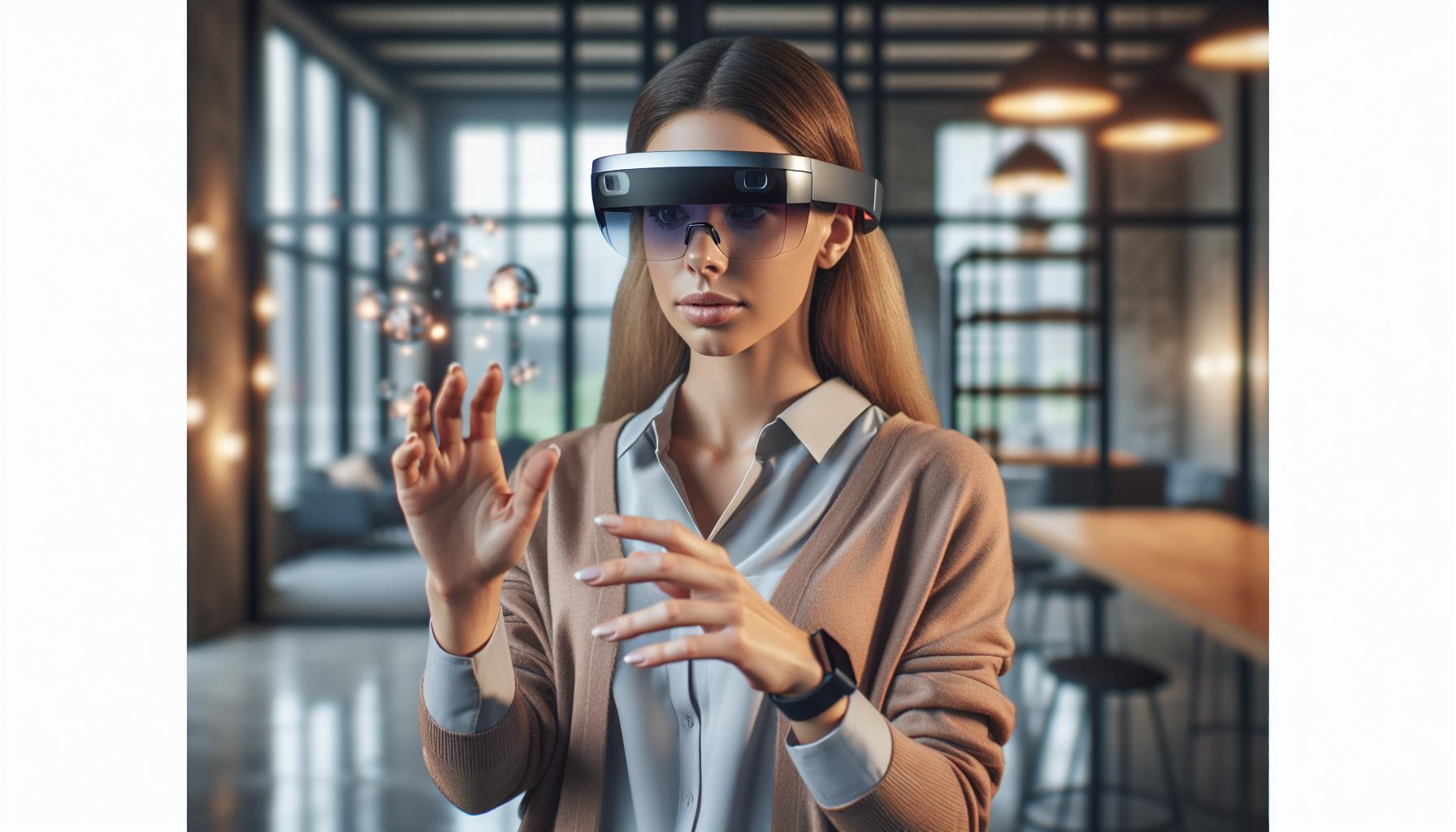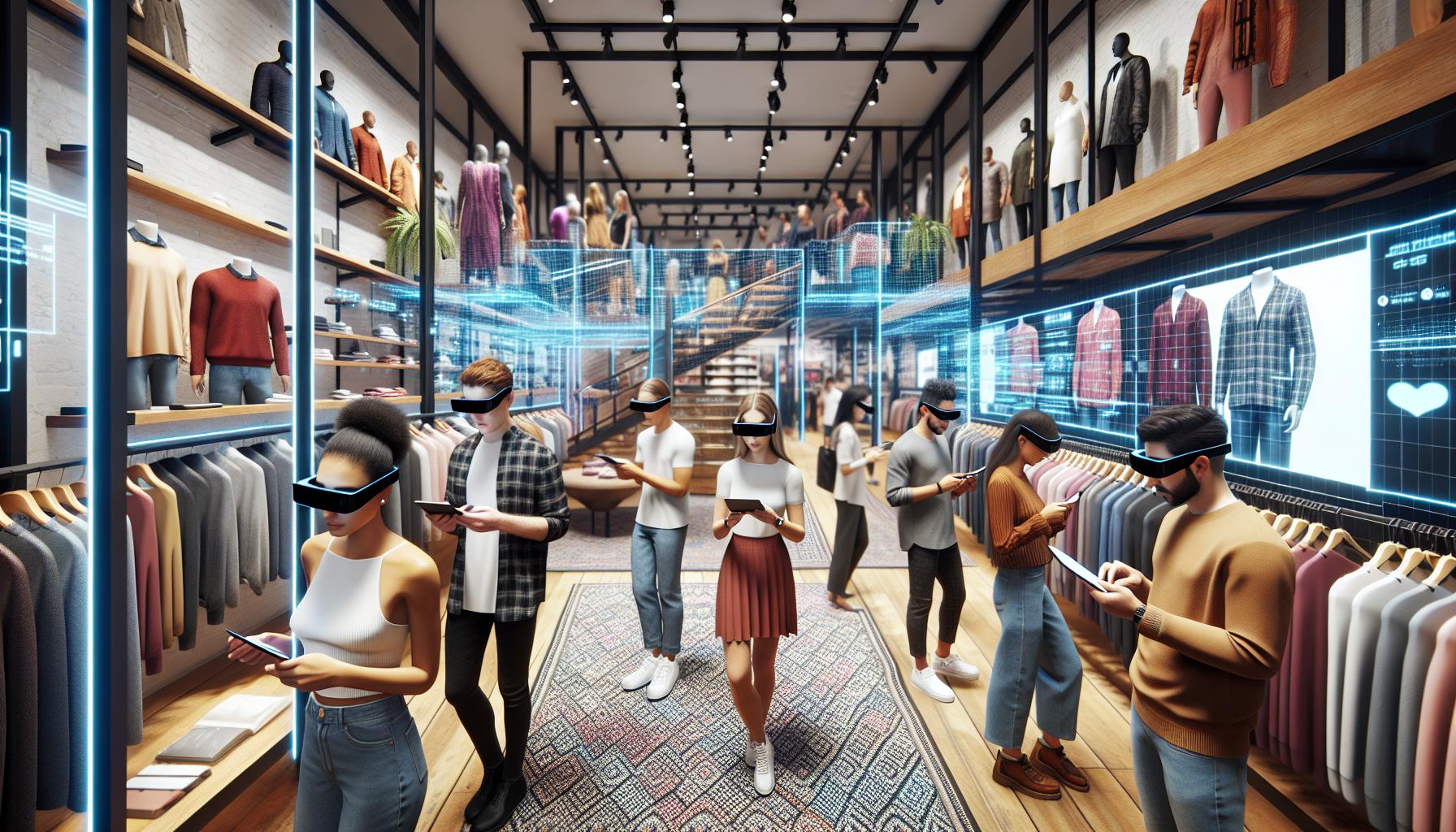Imagine a world where your morning coffee brews itself while your smart glasses remind you of that awkward conversation you had yesterday. Welcome to the future of augmented reality, where the line between the digital and the physical blurs faster than you can say “virtual reality.” As technology evolves, AR is poised to transform everyday experiences, making mundane tasks feel like a scene from a sci-fi movie.
The Future of Augmented Reality
Augmented reality (AR) is positioned to become a fundamental part of everyday life. It integrates digital information with the physical environment, reshaping how individuals interact with their surroundings. In education, AR enhances learning by providing immersive experiences, allowing students to visualize complex concepts.
Healthcare also stands to benefit significantly. Surgeons could use AR to access vital patient data during operations, improving accuracy and efficiency. Meanwhile, retail experiences are evolving, as consumers can virtually try on clothing or visualize furniture in their homes, boosting confidence in purchasing decisions.
Workplaces are adapting as AR technologies assist in training and skill development. Employees can receive real-time guidance, reducing errors and increasing productivity. This streamlined approach to training helps organizations maintain competitive advantages.
Social media platforms are evolving too. Users will share enhanced experiences through AR filters, creating engaging content that resonates with larger audiences. As AR tools develop, they’ll expand creative possibilities for both casual users and professional content creators.
Gaming industries embrace AR as well. Players can delve into immersive environments that blend seamlessly with the real world. The potential for community interaction through AR gaming can foster social connections in new and exciting ways.
Cities are embracing AR technology to improve navigation and information accessibility. Smart city applications will provide citizens with real-time data about traffic, public transport, and local events. This data-driven approach promotes efficiency and enhances urban living.
Through continuous advancements, AR is set to redefine various sectors. As these technologies mature, they’ll undoubtedly merge deeper into daily routines, enriching interactions and augmenting experiences in ways previously thought impossible.
Current Trends in Augmented Reality

Augmented reality (AR) continues to transform through various advancements and applications across multiple industries. This section outlines key trends currently shaping the future of AR.
Advancements in Technology
Innovations in AR tools enhance user experiences daily. Companies focus on improving hardware, such as smart glasses and headsets, making them lighter and more user-friendly. Software development also thrives, as platforms facilitate easier content creation. Enhanced machine learning algorithms enable better object recognition, allowing real-world interactions to feel more seamless. 5G technology accelerates data transfer, improving latency and enabling real-time applications. These technological advancements solidify AR’s place in daily routines, connecting users more closely to their environments.
Industry Applications
Diverse industries are rapidly adopting AR to improve operations and outcomes. In healthcare, AR aids surgeons with precise overlays during procedures, enhancing accuracy and patient care. Retailers invest in AR solutions to transform shopping experiences, allowing customers to visualize products in their homes before purchasing. Education also benefits from AR, making complex subjects more tangible through interactive lessons. Additionally, AR plays a role in manufacturing, where it assists in training and maintenance processes by guiding workers through intricate tasks. Overall, these applications showcase the practical value of AR across different fields, significantly impacting how people engage with technology and their daily lives.
Challenges Facing Augmented Reality

Augmented reality (AR) faces several challenges that hinder its full potential. Addressing these issues is crucial for its widespread adoption.
Technical Limitations
Hardware constraints often restrict AR experiences. Devices may lack processing power or battery life, limiting applications in real-time environments. In addition, software inconsistencies can lead to compatibility issues across different platforms. Many users encounter challenges with object recognition and latency, which detracts from immersion. Connectivity can also present obstacles, particularly in areas with slow internet speeds, ultimately affecting user experiences. Overcoming these technical barriers demands significant advancements in both hardware and software to deliver seamless interactions.
User Adoption Issues
User adoption continues to pose significant obstacles for AR growth. Many individuals remain unaware of AR’s capabilities, hindering engagement with available applications. Comfort levels with wearing AR devices vary; users often express concerns about aesthetics and practicality. Privacy concerns also surface, particularly regarding data collection and tracking features. Furthermore, a learning curve exists; unfamiliarity with AR functionalities can deter users from embracing the technology. Overcoming these hurdles requires extensive education and marketing efforts to cultivate interest and confidence in AR experiences.
The Role of Artificial Intelligence

Artificial intelligence (AI) significantly enhances the capabilities of augmented reality (AR), creating exceptional user experiences. AI algorithms analyze user behavior, allowing AR applications to respond intelligently to individual needs. Personalized learning becomes achievable in educational settings, where AI tailors experiences based on each student’s progress.
AI-driven object recognition improves interactions in retail environments, enabling virtual try-ons with high accuracy. Users benefit from immersive simulations that adapt in real time, making shopping both engaging and efficient. In healthcare, AI assists in analyzing patient data, ensuring surgeons receive critical information during procedures.
Enhancing User Experience
User experience improves as AI optimizes AR interactions. Systems can predict user preferences by learning from their actions, enhancing personalization. Context-aware suggestions enrich the AR experience, catering to users’ specific surroundings and activities. Interaction becomes seamless as AI filters out unnecessary clutter, presenting relevant information more effectively. Instantaneous feedback engages users, fostering deeper connections with their digital overlays. Integration of voice recognition adds another layer, allowing hands-free navigation through menus and commands.
Potential Innovations
Innovations are on the horizon with the fusion of AI and AR. Advanced natural language processing could create conversational interfaces, making interactions more intuitive. Predictive analytics could enable proactive features, anticipating user needs before they arise. Integration of AI-driven simulations offers virtual training environments tailored to individual learning styles. Gamification elements can enhance engagement by introducing rewards and challenges based on real-time data. Collaborative AR experiences powered by AI can facilitate remote teamwork seamlessly, connecting users across distances effectively. AI’s capabilities set the stage for a transformative future in AR, where interaction becomes more personalized and dynamic.
Ethical Considerations in Augmented Reality
Ethical considerations in augmented reality (AR) encompass critical issues that arise due to its integration into daily life. Concerns about user privacy emerge as AR devices collect vast amounts of personal data, raising questions about data security and consent. Companies must prioritize transparency, ensuring users understand what data is collected and how it is used.
Another significant issue involves the potential for misinformation. AR can overlay false information onto real-world environments, leading to confusion and misunderstandings. Effective strategies must exist to combat misinformation, such as implementing reliable content verification processes.
The impact of AR on social interactions also warrants attention. Users might become overly reliant on AR experiences, fostering isolation rather than connection. Promoting a balanced approach to technology use encourages healthy interpersonal relationships.
Accessibility remains a key factor in AR development. Efforts must be made to create inclusive experiences for individuals with disabilities, ensuring everyone can benefit from AR advancements. Compliance with accessibility standards will enhance AR’s positive impact on society.
Additionally, AR’s influence on perception and reality poses ethical challenges. Users could struggle to distinguish between real and augmented environments, which may lead to altered judgments. Establishing guidelines that promote responsible AR content and dissemination will safeguard users’ perceptions.
Overall, addressing these ethical considerations is vital for fostering a responsible AR landscape. By prioritizing user rights, ensuring accurate information, and promoting inclusivity, developers can create a future where AR enhances life without compromising ethical standards.
promise for transforming
The future of augmented reality holds immense promise for transforming everyday life and various industries. As technology continues to evolve AR will enhance how individuals interact with their environment providing immersive experiences that enrich learning shopping and social engagement. The integration of AI will further personalize these experiences making them more relevant and impactful.
While challenges remain including technical limitations and ethical concerns the path forward is filled with opportunities. By addressing these issues and fostering responsible use AR can create a more connected and efficient world. Embracing this technology now will pave the way for a future where the boundaries between the digital and physical realms blur seamlessly enhancing life in ways yet to be imagined.



